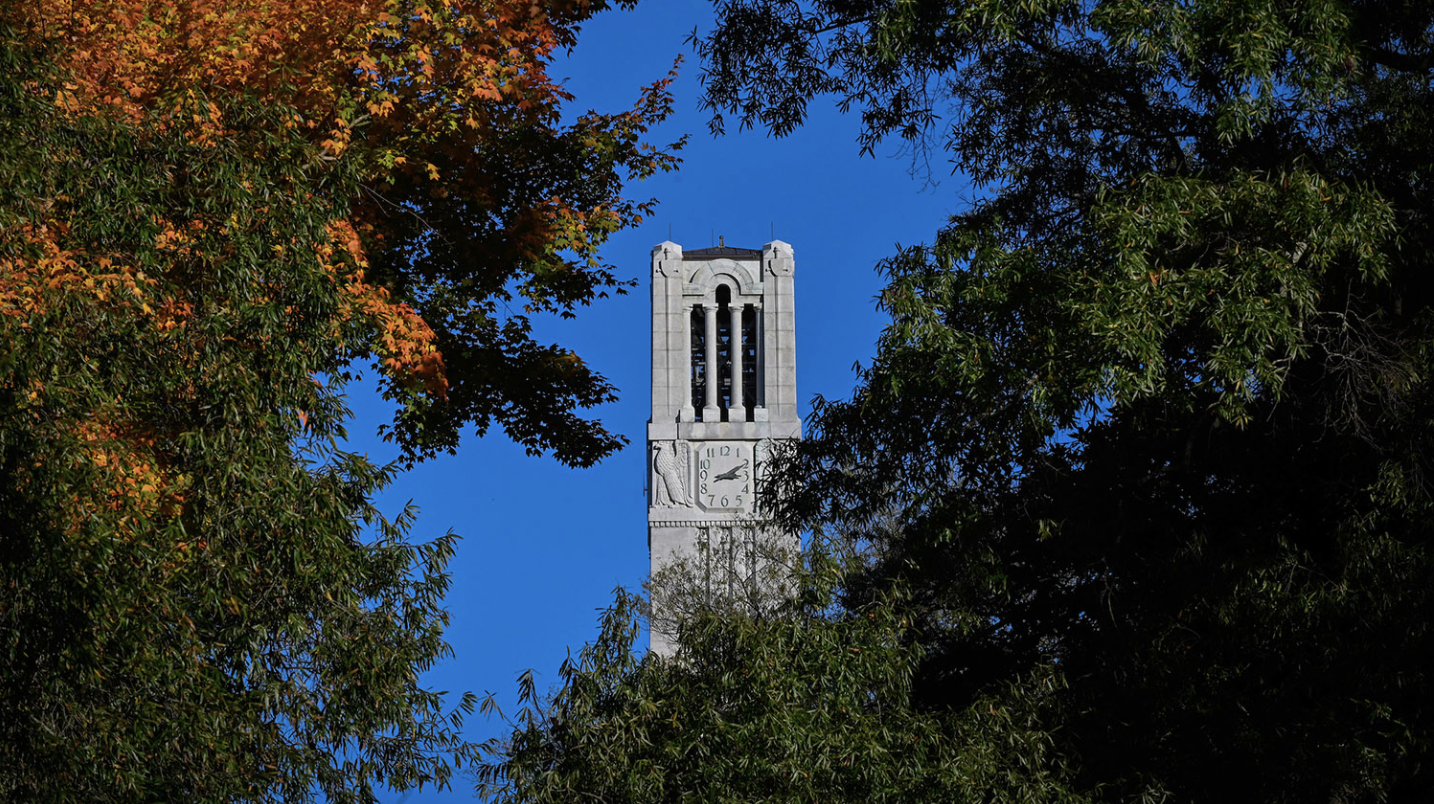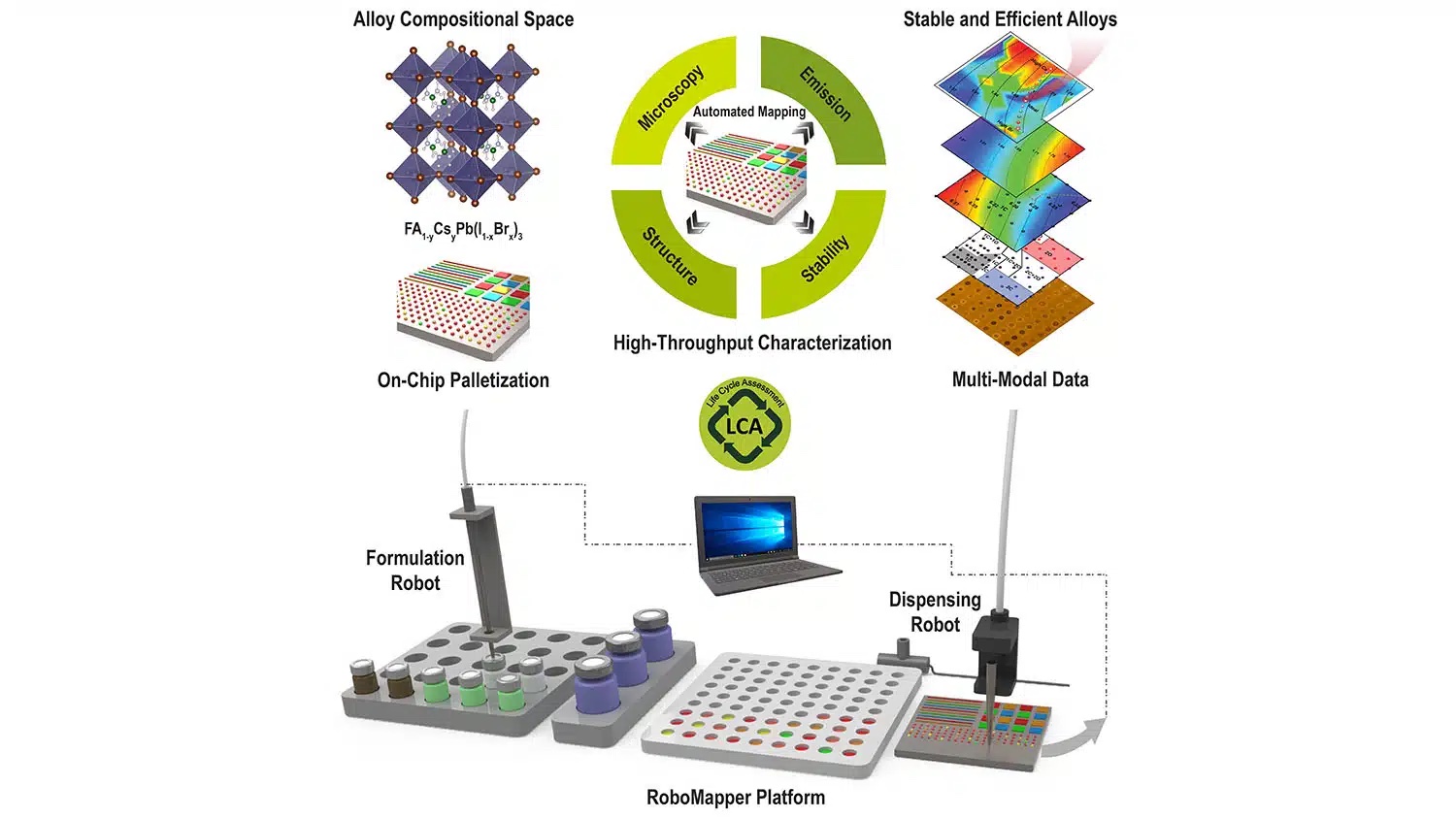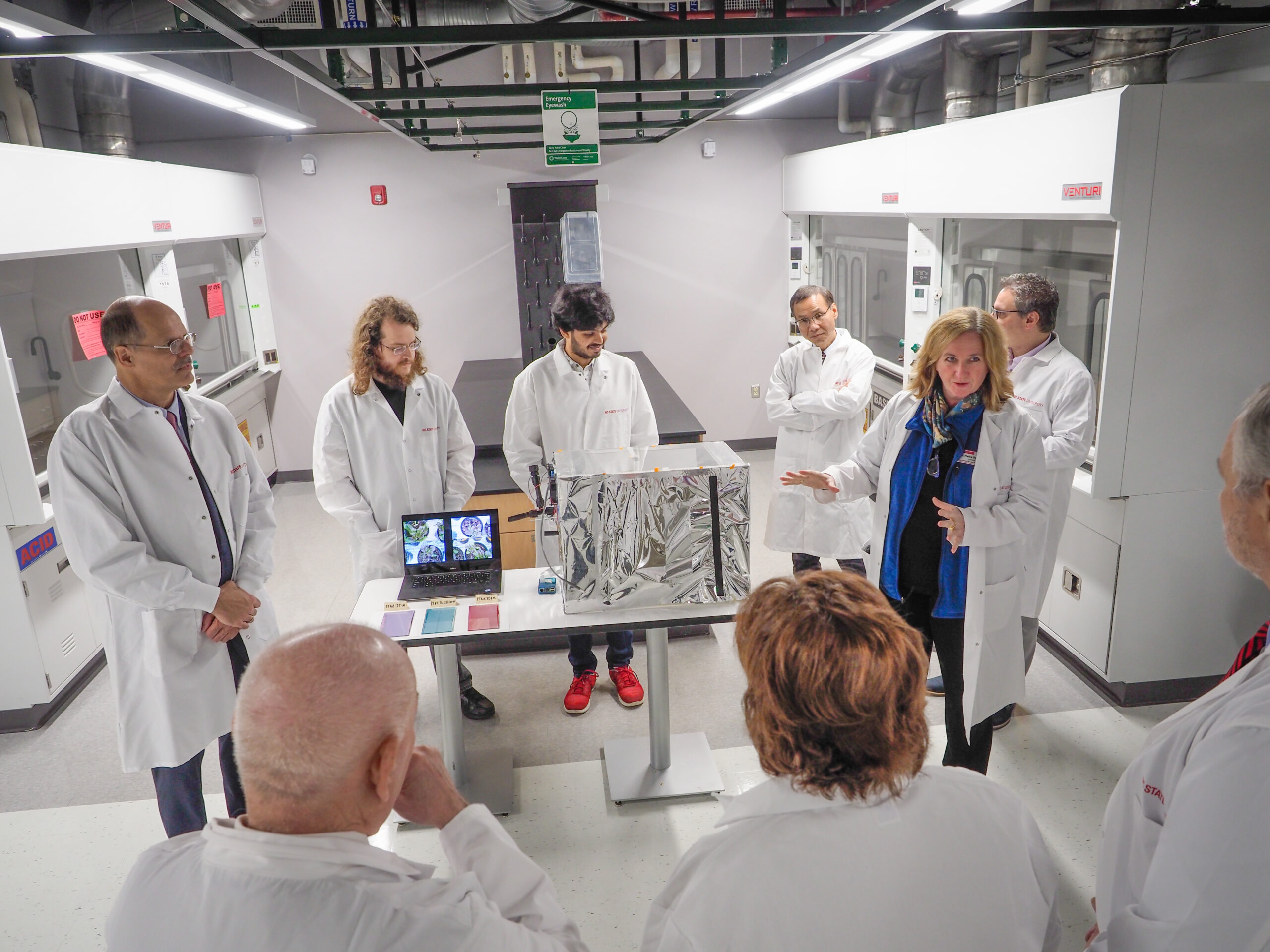A new organic solar cell design gives a fill factor of 77%
Ade group has co-authored a paper published in Nature Energy, wherein a three component (ternary) material mixture was found to extensively reduce carrier losses. This research has opened up a new way of redesigning organic solar cells capable of converting sun light to electricity efficiently. In collaboration with the group of Christoph Brabec from FAU Erlangen-Nuremberg, Harald and graduate student Xuechen Jiao resolved a unique active layer morphology whereby one organic donor material generates photocurrent while the second organic donor transports the generated photocurrent to external circuit with minimum loss. This process has dramatically increased the power conversion efficiency through highly improved charge collection efficiency.
This process has dramatically increased the power conversion efficiency through highly improved charge collection efficiency.
Ternary blend solar cells have existed for long time. Yet the addition of a third component usually leads to deteriorated morphology within active layers, which reduce the fill-factor (FF) largely. By using PTB7:Si-PCPDTBT:PC70BM as a model system, Ade group conducted complicated morphological investigation via advanced X-ray scattering techniques and found the morphological origin for this unprecedented high FF. The resonant soft X-ray scattering (RSoXS) measurement and grazing incident wide angle scattering (GIWAXS) measurement unravel that small amount of highly ordered Si-PCPDTBT can extend the effective absorption range without changing the lateral morphology. Most importantly, this research showed the enrichment of Si-PCPDTBT near the cathode provides a hole-transport highway to withdraw the photogenerated mobile holes from PTB7 to Si-PCPDTBT which avoids trap associated recombination. This morphological discovery opens up a new approach of designing and fabricating high efficiency ternary bulk heterojunction solar cells.
- Categories:


